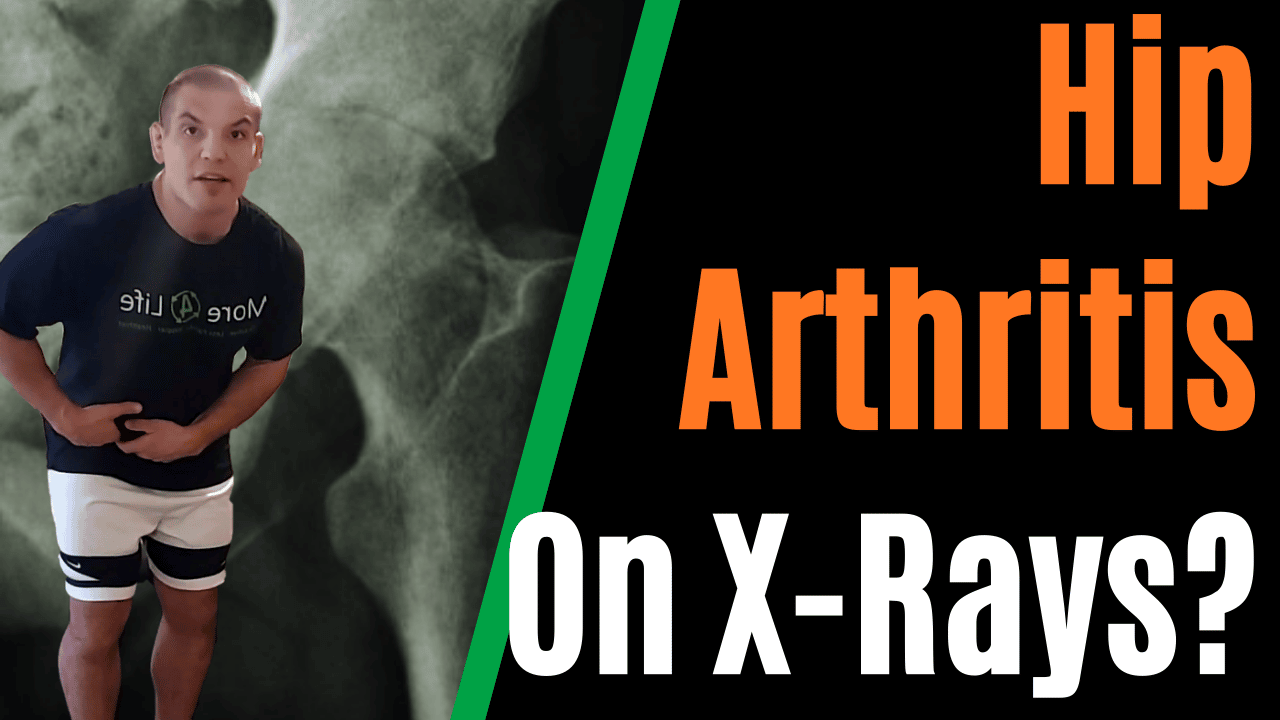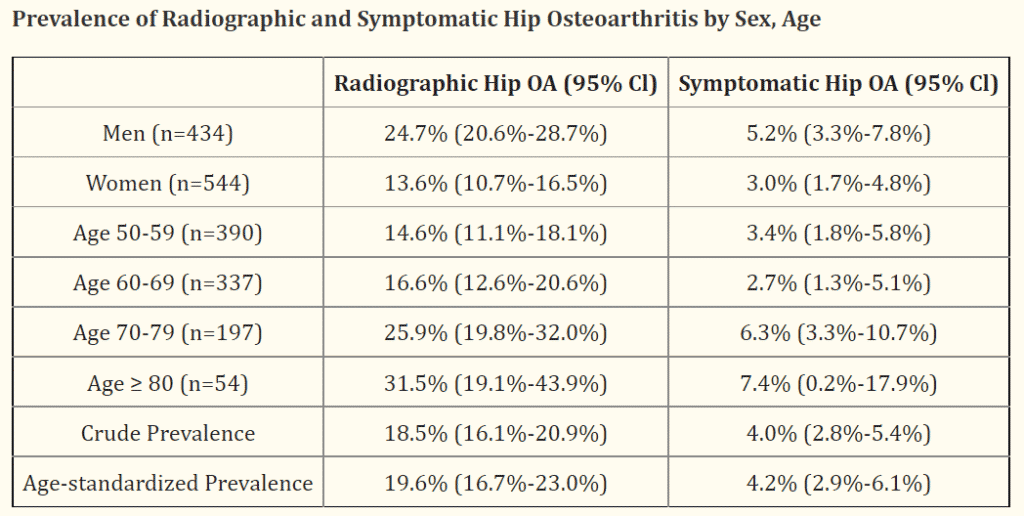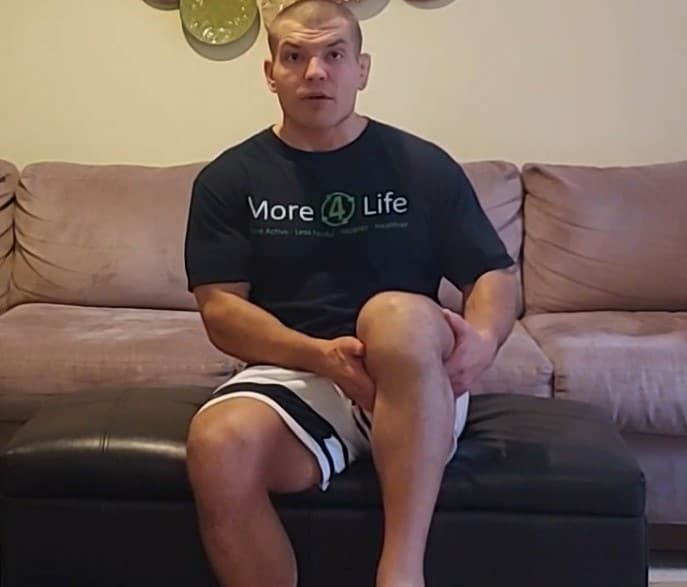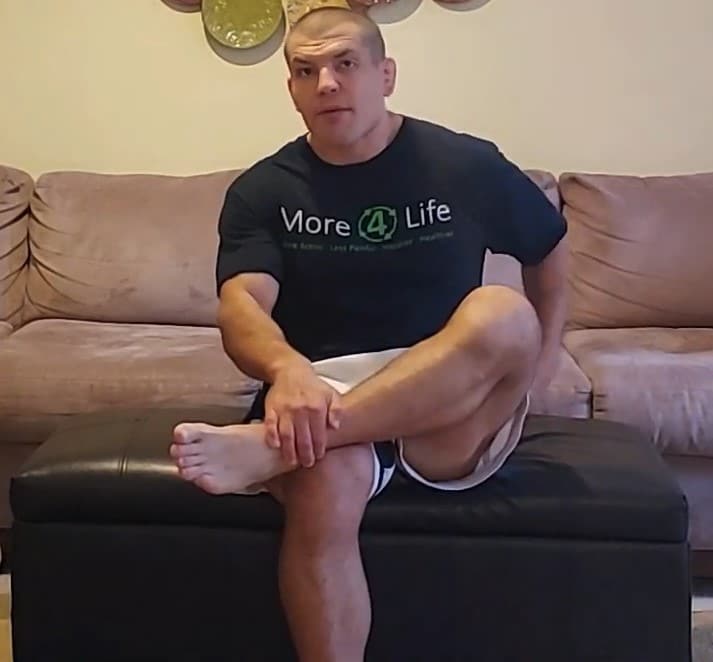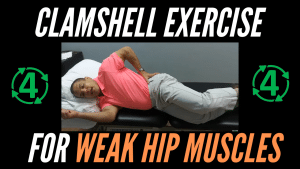When people have a painful hip with arthritis with on their x-rays, one of the first things they worry about is:
Will I Need A Hip Replacement?
Watch the video to learn why most people with hip arthritis on their x-rays don’t need a hip replacement!
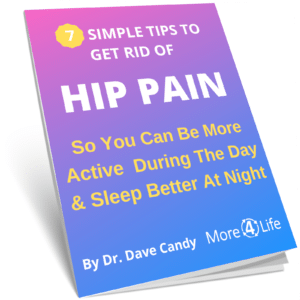
In this post, you'll learn:
- Common causes of hip pain
- Is hip arthritis the cause of my pain?
- How severe are my hip arthritis x-rays?
- Will I need a hip replacement?
- How to relieve hip pain WITHOUT needing surgery
Common Causes Of Hip Pain
Common Causes of Hip Pain include:
- Hip muscles
- IT band
- Lower back joints and/or nerves
- Sacroiliac (SI) joints
- Hip arthritis
Each of these different causes of hip pain has it's own unique signs and symptoms. The first factor in finding the cause is determining where you feel the pain.
People describe "hip pain" in numerous different ways.
When most people talk about "hip pain", they're referring to pain on the outside of the hip.
This type of pain is typically caused by weak gluteal muscles or a tight IT band.
The good news is, this type of pain isn't typically caused by hip arthritis, even if you have pain arthritis on your x-rays.
The BETTER news is that you don't need a hip replacement to relieve this kind of pain.
What About Pain In The Back Of The Hip?
Pain in the back of the hip (i.e. the buttock) is most commonly a referred pain from your lower back.
Both the joints in your lower back as well as the L5 and S1 nerve roots refer pain to the buttock. Additionally, some of the muscles in your lower back refer pain to the buttock.
If you have pain in back of the hip, I would probably assume it's coming from your lower back unless proven otherwise.
However your sciatic nerve or trigger points in your buttock or hamstring muscles can also cause pain in the buttock.
Is Hip Arthritis The Cause Of My Pain?
Hip arthritis is typically felt in the groin area. That's because the actual hip joint is a ball-and-socket between your pelvis and your thigh bone.
It's NOT the bump on the outside of your hip like many people think it is.
The bump on the outside of your hip (the greater trochanter) is just a place for muscles to attach to move your thigh bone. It's actually not a joint at all.
This means that true hip arthritis is typically felt in the groin region, where the joint is actually located. The pain may radiate down the inner thigh.
People with hip arthritis MAY also have pain in the buttock or pain on the outside of the hip, but these are usually secondary to muscle imbalances - often the same muscle imbalances that caused the hip arthritis in the first place!
So if you have hip arthritis on your x-rays and you DON'T have groin pain, chances are good that you won't need a hip replacement.
How Severe Are My Hip Arthritis X-Rays?
Typically when you go to your doctor for hip pain, the first thing they'll do is take hip x-rays.
And if you're over the age of 50 and you have x-rays of your hips, chances are pretty good that you'll find a hip with arthritis.
One study by the American College of Rheumatology showed that about 20% of people over the age of 50 have a hip with arthritis on their x-rays, but only about 20% of those people (4% total) have symptomatic hip arthritis.
Again, the good news about this is:
- Chances are pretty good that your hip arthritis is not the cause of your pain
- Chances are even better that you won't need a hip replacement.
The Five Grades Of Hip Arthritis
The Kellgren-Lawrence scale is an internationally accepted scale for grading hip arthritis x-rays.
- Grade 0 (normal) - normal amount of joint space
- Grade 1 (doubtful): doubtful joint space narrowing and possible
- Grade 2 (minimal): bone spurs present and possible joint space narrowing
- Grade 3 (moderate): multiple bone spurs, definite narrowing of joint space and possible bone changes
- Grade 4 (severe): large bone spurs, marked joint space narrowing, changes to bone ends underneath the cartilage
Will I Need A Hip Replacement?
If I haven't mentioned this enough throughout the course of this article so far, let me be very clear:
If you have a hip with arthritis on your x-rays, you probably WILL NOT need a hip replacement
If you have grade 1 or 2 hip arthritis, the thought of a hip replacement shouldn't even enter your mind.
Even at grade 3, chances are you'll still be able to function pretty well with everyday tasks without significant pain.
At grade 4 you might start to consider getting a hip replacement, but ONLY if you're having groin or inner thigh pain that's significantly affecting your quality of life.
You don't want to make a diagnosis or decide on surgery just based on a x-ray thogh.
Your clinical presentation should also include ALL of the following signs:
- Hip Pain
- Limited and painful hip range of motion
- Morning stiffness up to 60 minutes
- Age > 50
Need Help For Hip Pain?
If you'd like to discover what you can do to relieve your hip pain without needing a hip replacement, click the button below to request a Hip Pain Discovery Visit
What To Do For A Hip With Arthritis On X-Rays?
If you'd like to relieve hip pain without surgery, here are a few things you can do to help.
Non-Arthritis Hip Pain
As I mentioned before, true hip arthritis pain is typically felt in the groin. However, many people consider "hip pain" to be pain on the outside of the hip or the back of the hip (buttock).
Click here for tips to relieve pain on the outside of the hip
Click here for tips to relieve pain in the back of the hip (sciatica)
Exercises For Hip Arthritis
If you're sure that arthritis is the cause of your pain, there are two general classifications of exercises for hip arthritis exercises that might help.
- Mobility / Flexibility Exercises For Hip Arthritis
- Strengthening Exercises For Hip Arthritis
Mobility / Flexibility Exercises For Hip Arthritis
The goal of these these hip arthritis exercises is to maximize the space available in the hip joint.
With today's technology, it's not currently possible to regenerate cartilage within the hip joint, but you can do things to make the most of the joint space that you DO have available.
One great example of a mobility exercise is pulling your knee towards your chest either while sitting or laying down.
The goal of this exercise is to stretch the back part of the hip.
If you feel a pain or pinching in the front of the hip or groin when doing this, it's OK to go just up to the point of pain, but don't try to push past it.
This is NOT a no pain, no gain type of stretch.
If you're getting pinching in the groin when doing this exercise, you've likely reached the end range of the hip joint, and you're just going to jam the ball and socket together further if you try to push it.
It won't feel good, and it won't help your problem. If anything, it will just make you more sore.
Piriformis Stretches
Piriformis stretches are one of the best mobility / flexibility exercises for hip arthritis.
This exercise also stretches the muscles in the back of the hip joint so that the ball of the hip joint can move more freely in the socket.
There are actually two different ways to do piriformis stretches.
Click here to learn how to do piriformis stretches and learn which version of the stretch is best for you.
Hip Flexor Stretches
If you have a hip with arthritis, it's also important that you stretch the muscles on the front side of your hip. Tight hip flexors can create unnecessary pressure between the ball and socket of your hip joint.
Click here to learn 4 different ways to stretch your hip flexors
Strengthening Exercises For Hip Arthritis
One common cause of hip arthritis pain is weak gluteal (butt) muscles.
Your glute muscles help you to balance your body over one leg while walking so that you don't tip over to the side.
Therefore, balancing on one leg is one of the best strengthening exercises for hip arthritis.
Click here to learn how to strengthen your hip muscles so that you can walk without more comfortably
It's OK to hold on for balance when standing on one leg.
However, if you still have too much pain or difficulty standing on one leg, or you just can't figure out how to get your glute muscles turn on, the clamshell exercise is another great exercise to strengthen your glute muscles.
However, 95% of people do the clamshell exercise WRONG!
Click here to learn how to do clamshells correctly
So that's about it for today.
Take Home Points:
- If you have a hip with arthritis on your x-rays, chances are very good that you WON'T need a hip replacement
- You need to find out what's causing your hip pain in order to determine the proper treatment for it.
Want To Find The Cause Of Your Hip Pain?
Request a Free Discovery Visit to discover how we can help
Like this post? See our other posts about hip pain
Such as:
Prevent hip pain when sleeping at night
Can't lift leg to get in the car?

